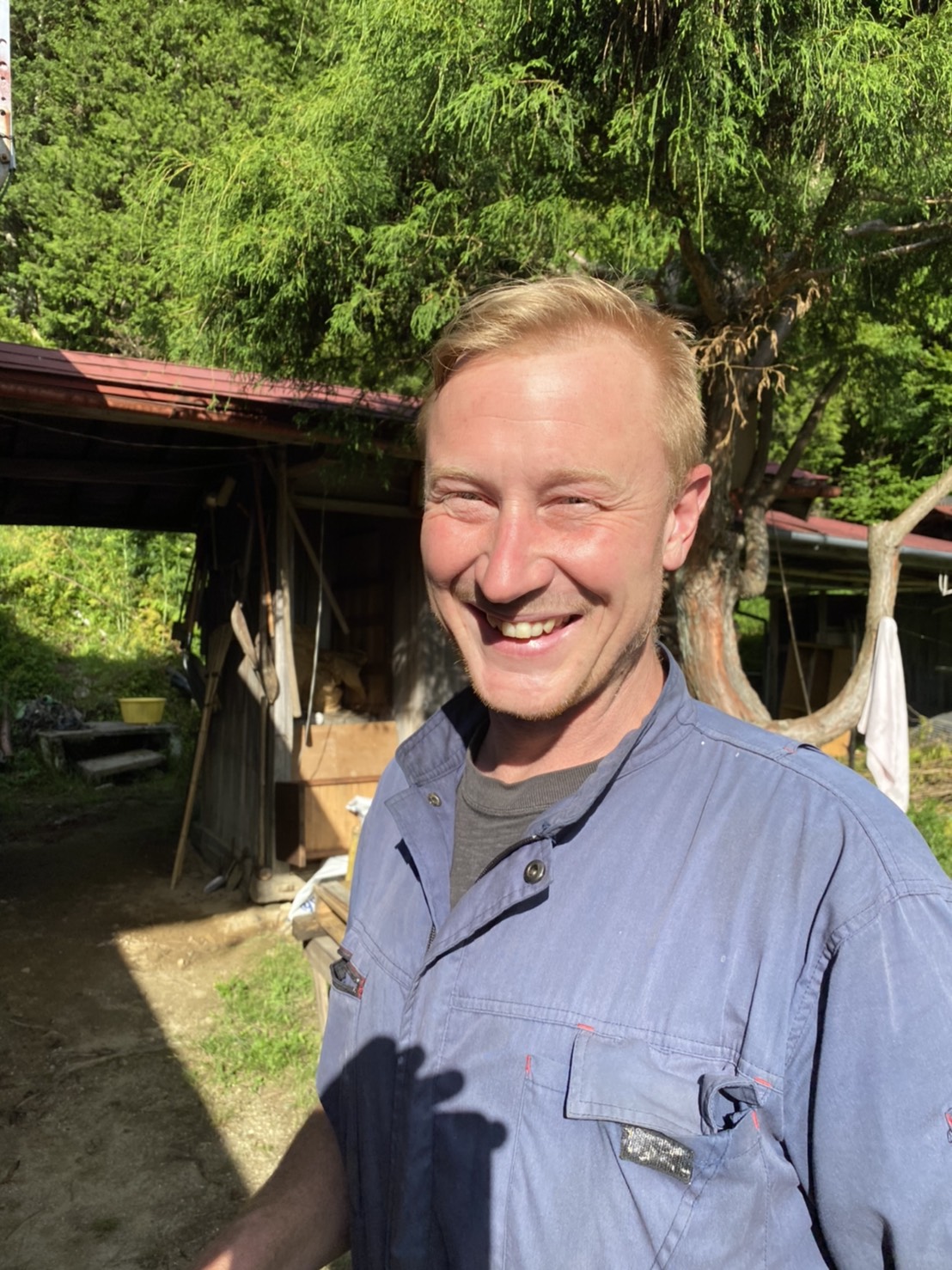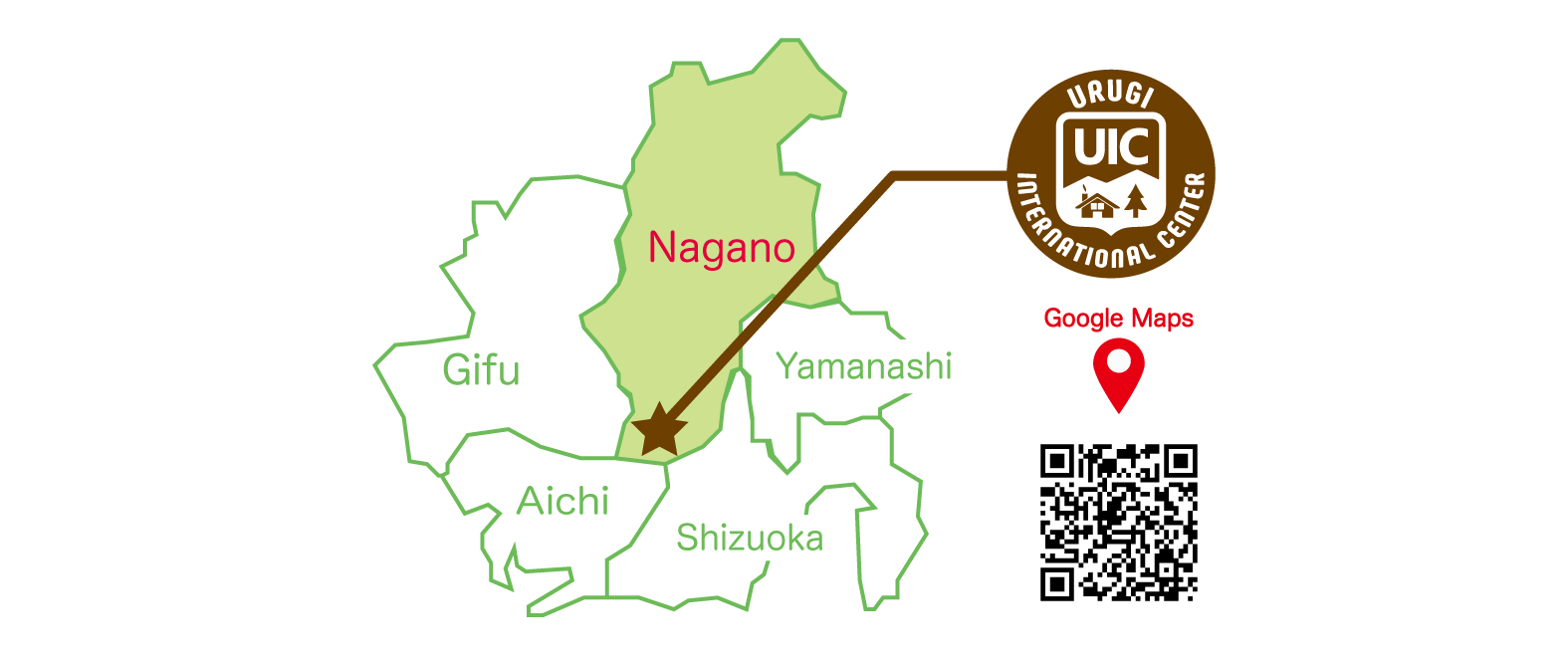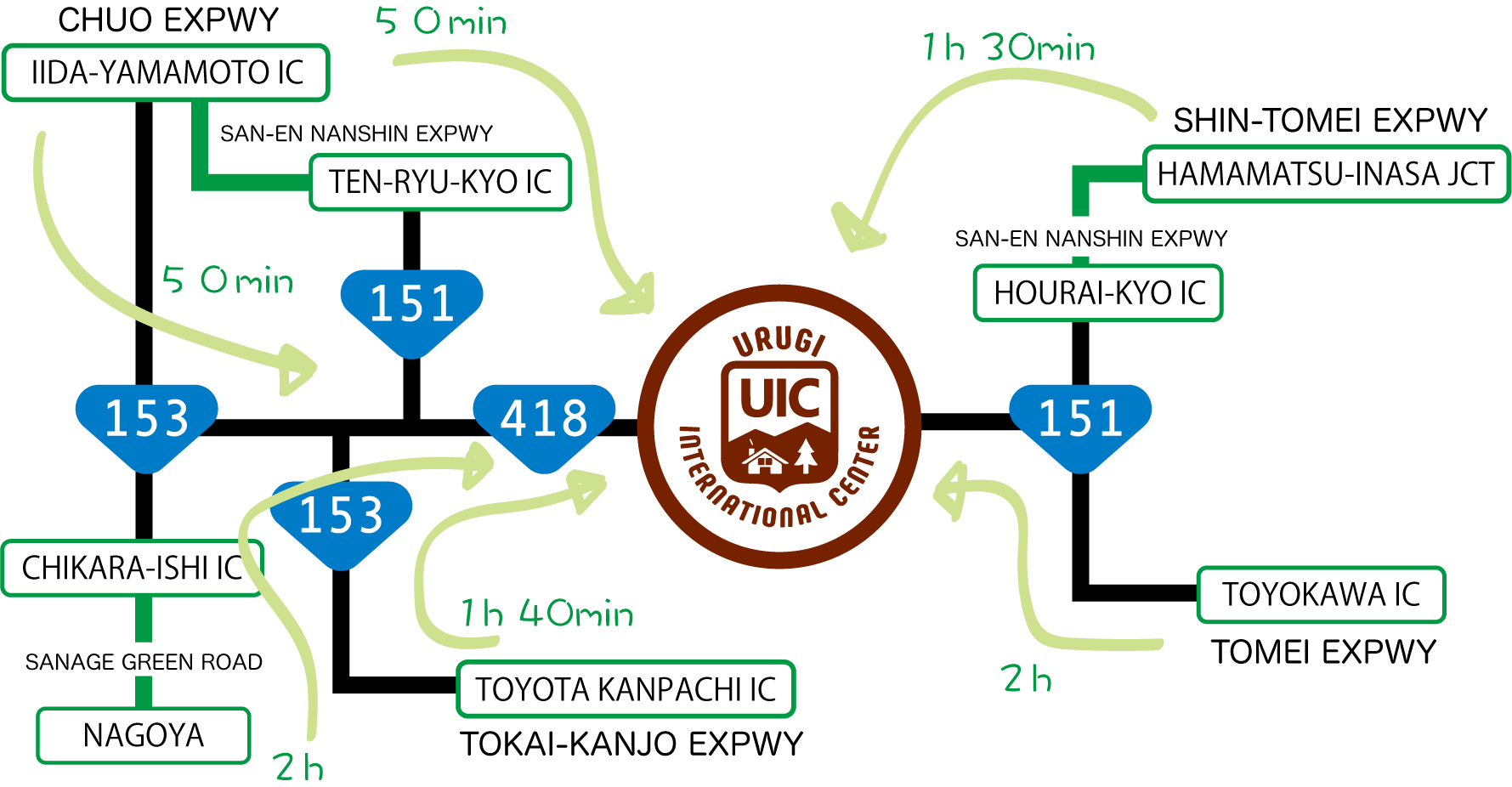Abount The UIC
Background
The Urugi International Center (short UIC) is a 115+ years old traditional Japanese Alpine house (kominka) that once contributed to the production of silk.
As of 2017, after staying uninhabited for more than 10 years, partial renovation efforts made it usable again and gave it a new purpose.
Concept
Being given the name Urugi International Center,
the intention is to use the UIC as a cultural center welcoming local and international guests,
promoting cultural exchange engagements, and to tangibly increase awareness of traditional houses,
local culture & history, all in a “Deep Japan” environment.
About Alexander NISER, Manager of the UIC,
Alex lives in Japan since 2001 and moved from Aichi prefecture to Urugi, Nagano Prefecture in 2017.
He currently manages the UIC where he runs outdoor experience programs for students who want to (re)connect with nature.
Alex is looking forward welcoming visitors from all over the world who seek a tangible Deep Japan experience.
Come and see for yourself what Urugi has to offer.
Further information
Find out more about what we do and offer by clicking on the above menu links.
We are looking forward welcoming you!
Links


What we offer
STAY & ACTIVITIES
Homestay
Traditional kominka-style homestay (¥7,500 per person per stay, meals not included).
Shared kitchen and hearth for food preparation is available.
Check calendar for booking availability or contact us directly (See Contact details).
Activities (for all ages)
Trekking
Short and long tours (from ¥5,000 per group).
Workshop
Bamboo Craft making experience (from ¥5,000 per group).
All activities are available in Japanese, English, German or French.
Please contact us for bookings or further information.
Contact Info
Alexander NISER, UIC Manager
Urugi International Center
218, Urugi-Mura, Shimo Ina-gun,
Nagano-ken, 399-1601
TEL: 0260-28-2227
About Urugi
Location
Urugi (population slightly dwindling to 500) is one of the southernmost villages of Nagano Prefecture,
It is located near Mt. Chausu, the highest area of Aichi Prefecture.
located near Mt. Chausu, the highest area of Aichi Prefecture.
The village spreads in four directions within a valley 850 meters above sea level.
It is accessible by road only but is reachable within a two hour drive from Nagoya or Hamamatsu.
Nature is abundant as 88% percent of the village are covered by the Tenryū-Okumikawa Quasi-National Park
forests of the in the Mt. Chausu plateau.
History
The making of wooden artifacts such as bowls and trays was once one of the main activities during the
Edo period thus giving it its name “wood trading village”.
Yearly contributions were settled with wood instead of rice. Charcoal making was thriving until the
early Showa era making Urugi a village that was fully dependent on wood.
The making of charcoal has regained interest as of lately.
Today, the village is mainly involved in agriculture. Due to its altitude and clean fresh water, high quality rice,
corn, tomatoes, myoga and apples are being produced.
Rice is still hang-dried the traditional way after its harvest.
Villager elders occasionally gather for the production of charcoal in a traditional kiln.
Smaller drum kilns are also available for the production of bamboo charcoal.
Overall, villagers maintain a traditional way of life, giving visitors a time-slip feeling.
Hot Spring
Natural mineral hot water is supplied from the center of the village to three bathing facilities,
Komadori no Yu, Sasayuri So and Yuseikan.
Sightseeing spots
- Mukaibara - Lotus pond
- Takamori Yama - Stargazing platform
- Marubata ravine & Oyako naturally formed pot hole
- Iwakura Dam
- Yamanami viewpoint
- Mt. Chausu plateau & Atebidaira Kotori Forest trail
Shops
- Minami Shinshu Michi no Eki (Road Station)
- Ohashi’s Shop (General store)
- Hiranoya’s shop (Local store)
- Harumiya (Drug store & delivery)
Restaurants & Cafés
- Urugi Ann (Japanese/udon)
- Pole Pole (Organic & Vegetarian food)
- Arigato (Rural izakaya)
- Mirabelle (French bistro)
- Nono Ann (café & tarot)
- Takara’s Goats (milk & cheese)
Access

